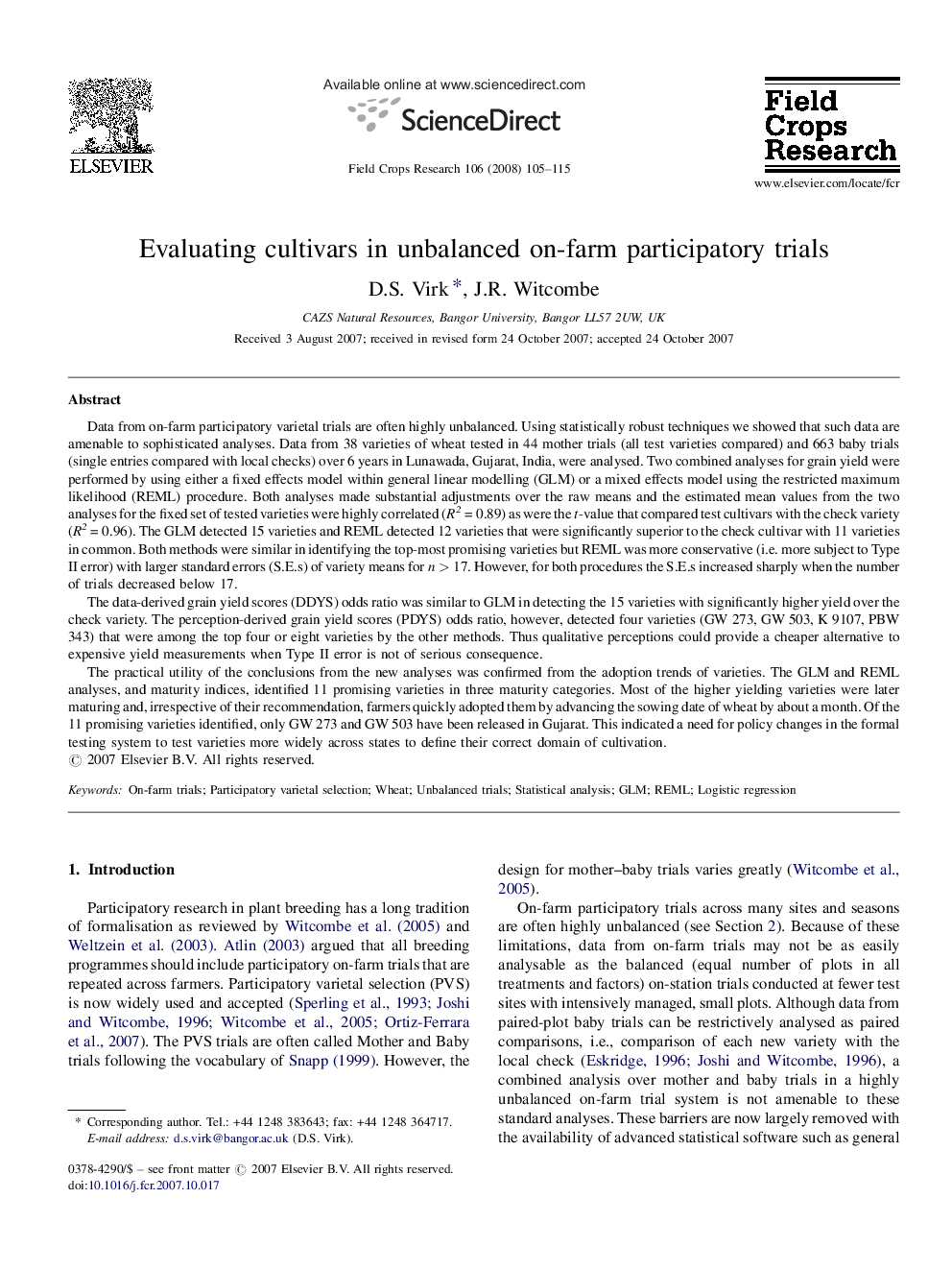| Article ID | Journal | Published Year | Pages | File Type |
|---|---|---|---|---|
| 4511349 | Field Crops Research | 2008 | 11 Pages |
Data from on-farm participatory varietal trials are often highly unbalanced. Using statistically robust techniques we showed that such data are amenable to sophisticated analyses. Data from 38 varieties of wheat tested in 44 mother trials (all test varieties compared) and 663 baby trials (single entries compared with local checks) over 6 years in Lunawada, Gujarat, India, were analysed. Two combined analyses for grain yield were performed by using either a fixed effects model within general linear modelling (GLM) or a mixed effects model using the restricted maximum likelihood (REML) procedure. Both analyses made substantial adjustments over the raw means and the estimated mean values from the two analyses for the fixed set of tested varieties were highly correlated (R2 = 0.89) as were the t-value that compared test cultivars with the check variety (R2 = 0.96). The GLM detected 15 varieties and REML detected 12 varieties that were significantly superior to the check cultivar with 11 varieties in common. Both methods were similar in identifying the top-most promising varieties but REML was more conservative (i.e. more subject to Type II error) with larger standard errors (S.E.s) of variety means for n > 17. However, for both procedures the S.E.s increased sharply when the number of trials decreased below 17.The data-derived grain yield scores (DDYS) odds ratio was similar to GLM in detecting the 15 varieties with significantly higher yield over the check variety. The perception-derived grain yield scores (PDYS) odds ratio, however, detected four varieties (GW 273, GW 503, K 9107, PBW 343) that were among the top four or eight varieties by the other methods. Thus qualitative perceptions could provide a cheaper alternative to expensive yield measurements when Type II error is not of serious consequence.The practical utility of the conclusions from the new analyses was confirmed from the adoption trends of varieties. The GLM and REML analyses, and maturity indices, identified 11 promising varieties in three maturity categories. Most of the higher yielding varieties were later maturing and, irrespective of their recommendation, farmers quickly adopted them by advancing the sowing date of wheat by about a month. Of the 11 promising varieties identified, only GW 273 and GW 503 have been released in Gujarat. This indicated a need for policy changes in the formal testing system to test varieties more widely across states to define their correct domain of cultivation.
